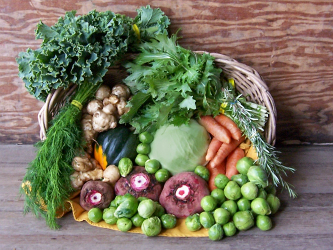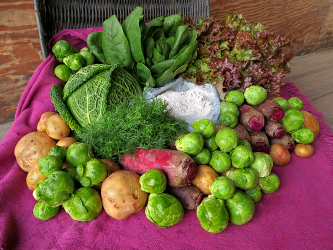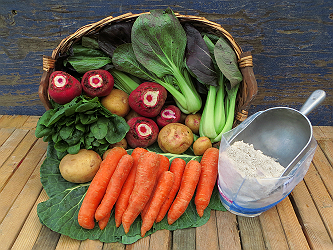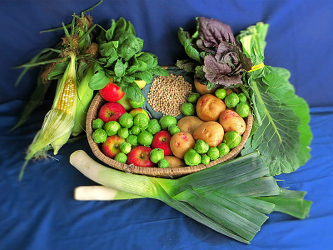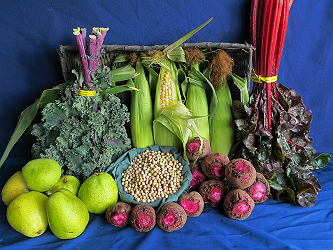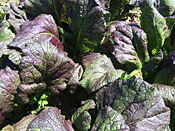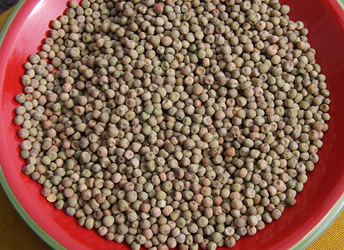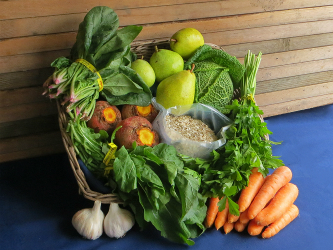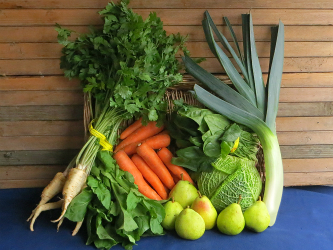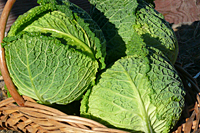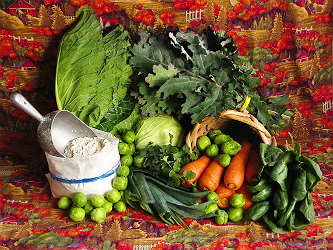
Standard
Brussels Sprouts 1.5 lbs
Cilantro 1 bu
Collards 1 bu
Spinach 1 bu
Table Carrots 3 lbs
Soft White Wheat Flour 4 lbs
Red Russian Kale 1 bu
Green Cabbage 1 hd
Leek 1
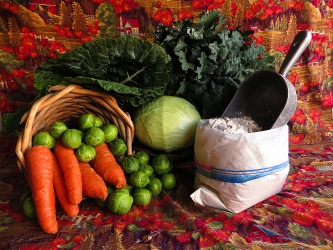
Small
Brussels Sprouts 1.5 lbs
Collards 1 bu
Table Carrots 2 lbs
Soft White Wheat Flour 4 lbs
Red Russian Kale 1 bu
Green Cabbage 1 hd
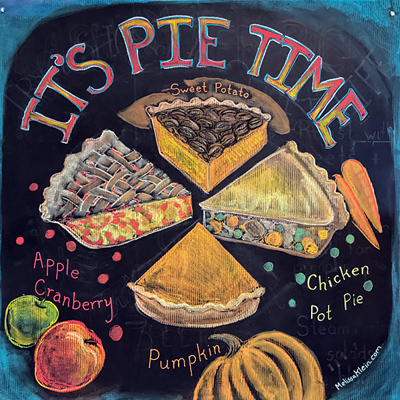
Nash’s Soft White Flour makes an excellent pie crust!
Our grocery buying Breanna Krumpe loves to bake. She found this recipe on her favorite bakers’ website, sallysbakingaddiction.com. “I use 1/4 cup ice water and 1/4 cup vodka for my liquid,” she says. “The vodka cooks off and it makes the dough more elastic and easier to use.”
Buttery Pie Crust
2-1/2 cups all-purpose flour
1-1/4 teaspoons salt
6 Tbsp. unsalted butter, chilled and cubed
3/4 cup vegetable shortening, chilled
1/2 cup ice water, or 1/4 cup ice water & 1/4 cup vodka
Mix the flour and salt together in a large bowl. Add the butter and shortening.
Using a pastry cutter or two forks, cut the butter and shortening into the mixture until it resembles coarse meal (pea-sized bits with a few larger bits of fat is OK). A pastry cutter makes this step very easy and quick.
Measure 1/2 cup of water in a cup. Add ice. Stir it around. From that, measure 1/2 cup of water– since the ice has melted a bit. Drizzle the cold water in, 1 tablespoon at a time, and stir with a rubber spatula or wooden spoon after every tablespoon added. Do not add any more water than you need to. Stop adding water when the dough begins to form large clumps.
Transfer the pie dough to a floured work surface. The dough should come together easily and should not feel overly sticky. Using floured hands, fold the dough into itself until the flour is fully incorporated into the fats. Form it into a ball. Divide in half. Flatten each half into 1-inch thick discs using your hands.
Wrap each tightly in plastic wrap. Refrigerate for at least 2 hours (and up to 5 days).
When rolling out the chilled pie dough discs to use in your pie, always use gentle force with your rolling pin. Start from the center of the disc and work your way out in all directions, turning the dough with your hands as you go.
Proceed with the pie per your recipe’s instructions.
You can prepare the pie dough and freeze the discs for up to 3 months. Thaw overnight in the refrigerator before using in your pie recipe.
Check out sallysbakingaddiction.com
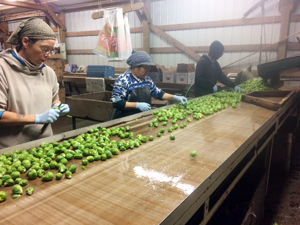
Brussels Sprouts:
The Perfect Thanksgiving “Side”
On the right, the crew at Nash’s culls the Brussels sprouts that they had just harvested. Thanksgiving is always a big push for Brussels!
These tiny cabbages were first grown in Brussels, and this is where their name was derived. They are believed to have evolved from a Savoy cabbage variety in the 17th or 18th century.
Brussels sprouts are high in gluconsinolates, bioactive compounds (aka “phytochemicals”) that have been linked to a reduction in cancer risk. They also contain glutathione, an important compound that induces detoxification of chemicals within the liver. They are good sources of calcium, magnesium, vitamins A and C, and beta carotene.
Brussels Sprouts, Apple & Bacon Hash
3 cups Brussels sprouts, trimmed, halved if large
2 red onions, unpeeled, halved lengthwise
Extra-virgin olive oil
Coarse salt and freshly ground pepper
1 apple, cored
1/2 Tbsp. unsalted butter
6 ounces thick-cut bacon (about 4 slices), cut into
1/2-inch pieces
Preheat oven to 375°F. Toss Brussels sprouts and onions with just enough oil to coat; season with salt and pepper. Spread vegetables in a single layer on a rimmed baking sheet. Fill center of apple with butter, and add to baking sheet. Roast until tender when pierced with a fork, about 30 minutes for the apple, 40 to 45 minutes for the vegetables.
Meanwhile, cook bacon in a large, heavy skillet over medium heat until fat renders and bacon begins to crisp, about 12 minutes. Pour off most fat, leaving behind enough to coat bottom of pan.
When onion and apple are cool enough to handle, cut into pieces about the size of Brussels sprouts. Add onion, apple, and Brussels sprouts to bacon in skillet, and cook over medium heat, stirring occasionally, until heated through, about 15 minutes. Enjoy!
Recipe from www.marthastewart.com

